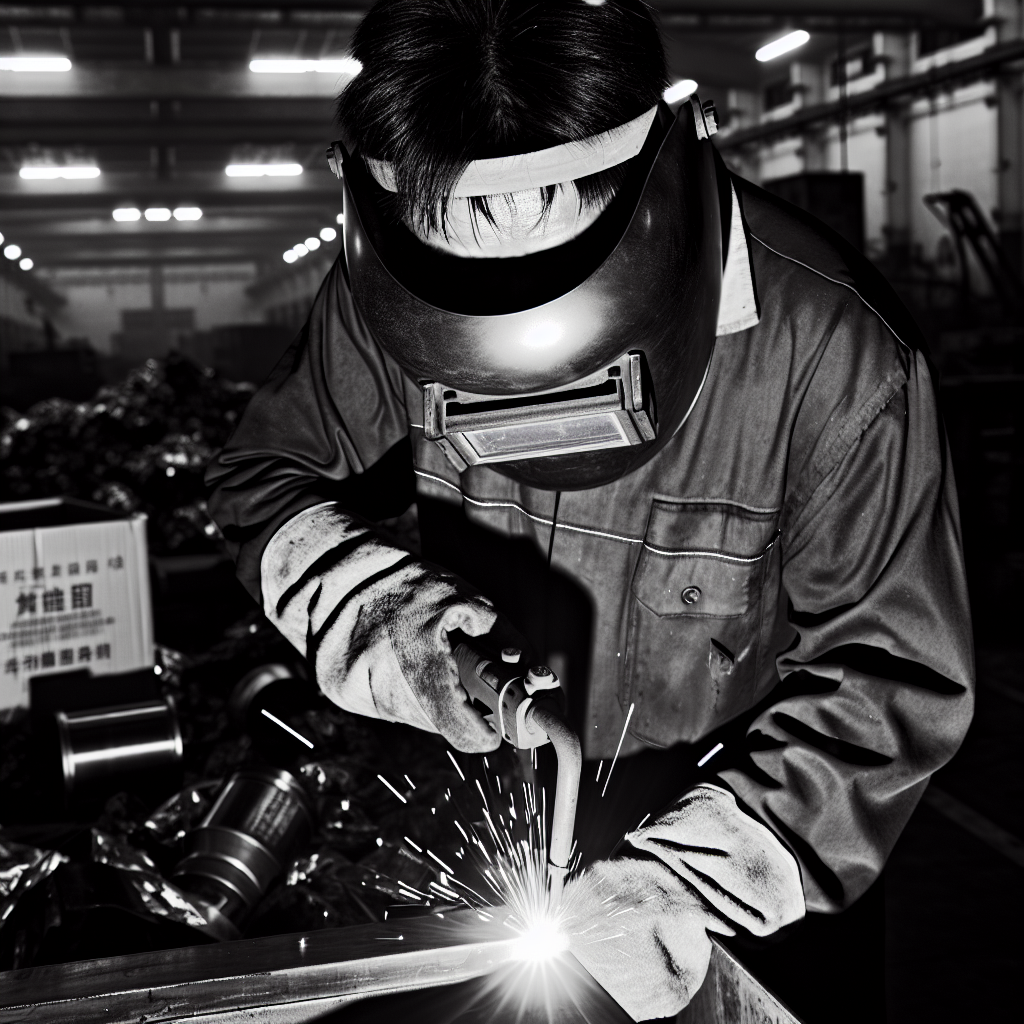Fabrication and welding are two essential processes in various industries, each serving distinct purposes in the production of metal structures and components. While the terms are often used interchangeably, it is crucial to understand the differences between them to ensure the proper execution of projects and achieve desired outcomes.

Fabrication is the process of creating metal structures by cutting, bending, forming, and assembling various components. It involves the skilled manipulation of materials to achieve the desired shape and size for the final product. Fabrication requires a keen eye for detail and a strong understanding of metallurgy to ensure the structural integrity of the fabricated item.
Various techniques are employed in the fabrication process, each serving a specific purpose. Cutting involves the use of tools such as saws, lasers, or plasma cutters to trim metal sheets to the required dimensions. Bending utilizes machines like press brakes to shape metal into angles and curves. Forming involves the manipulation of metal through processes like rolling or stamping to achieve specific shapes. Assembling brings together the various fabricated components using methods like welding, bolting, or riveting.
Welding, on the other hand, focuses on joining metal pieces together by melting the materials at the joint and allowing them to cool, creating a strong bond. It is a critical process in construction, manufacturing, and repair work, requiring precision and expertise to ensure the structural integrity of the welded joints.
There are different types of welding processes, each suitable for specific applications. MIG welding, also known as Gas Metal Arc Welding (GMAW), uses a wire electrode to create a stable arc between the welding gun and the workpiece. TIG welding, or Gas Tungsten Arc Welding (GTAW), utilizes a non-consumable tungsten electrode to produce clean, high-quality welds. Stick welding, or Shielded Metal Arc Welding (SMAW), is a versatile method that uses a flux-coated electrode to join metals together. Flux-cored arc welding (FCAW) employs a tubular wire electrode with flux inside to shield the weld from contaminants.
The primary difference between fabrication and welding lies in their focus on processes. Fabrication involves shaping and assembling metal components to create a final product, while welding focuses on joining metal pieces together through the melting and solidification of materials.
Materials used in fabrication and welding also differ, with fabrication involving the manipulation of raw metal sheets, tubes, and rods, while welding requires consumable electrodes or filler materials to create strong bonds between metal surfaces.
Skill sets required for fabrication and welding vary as well, with fabrication demanding proficiency in cutting, bending, and forming techniques, while welding necessitates mastery of welding processes and understanding of metallurgy to achieve durable welds.
Applications of fabrication and welding span across various industries, with fabrication commonly used in construction, manufacturing, and engineering projects, while welding is essential in automotive, aerospace, and fabrication industries for joining metal components.
When deciding between fabrication and welding for a project, several factors must be considered. Budget constraints may influence the choice, as welding processes often require specialized equipment and consumable materials, while fabrication techniques may be more cost-effective for certain applications.
Timeline is another crucial factor, as welding processes can be time-consuming due to the need for precise preparation and execution of welds, whereas fabrication techniques like cutting and forming may be quicker for producing components.
The complexity of the project plays a significant role in deciding between fabrication and welding, as intricate designs may require both fabrication and welding techniques to achieve the desired outcome.
Ultimately, the desired outcome of the project will determine whether fabrication or welding is the more suitable process, with fabrication being ideal for creating custom metal structures and welding for joining metal components securely.
Here are several misconceptions surrounding fabrication and welding that need to be debunked. One common misconception is that fabrication is limited to cutting and shaping metal, overlooking the intricacies of forming, bending, and assembling metal components in the fabrication process.
Another misconception is that welding is synonymous with fabrication, failing to recognize welding as a distinct process focused on creating strong bonds between metal pieces through heat generation and solidification.
Fabrication and welding play integral roles in various industries, contributing to the production of structures, machinery, and components that are essential for infrastructure development and technological advancement. Fabrication allows for the customization of metal components to meet specific design requirements, while welding provides the means to join metal pieces together securely.
Opportunities for growth and advancement in the field of fabrication and welding are abundant, with advancements in technology and automation continually improving processes and efficiency in metal fabrication and welding industries.
In conclusion, understanding the differences between fabrication and welding is crucial for mastering these processes and achieving optimal results in metalworking projects. By recognizing the distinct roles of fabrication and welding, selecting the right process for the job, and adhering to safety practices, professionals in the field can elevate their skills and contribute to the growth and innovation in the fabrication and welding industries. Continued exploration and learning in these fields will lead to further advancements and opportunities for success in the ever-evolving world of metal fabrication and welding.